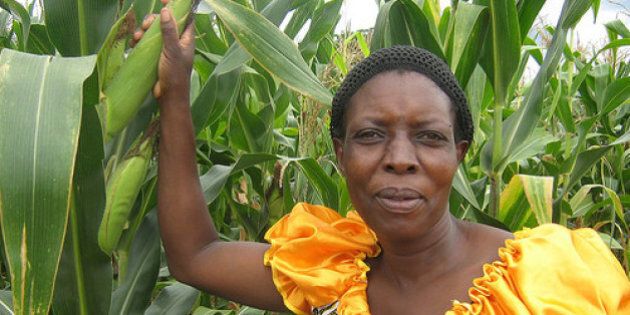
Goal 2: End hunger, achieve food security and improved nutrition and promote sustainable agriculture
By Stuart Clark
When someone proposes an overly ambitious idea, someone else is likely to say facetiously "... and end world hunger." As if this was an impossibility.
While it may be impossible to ensure that every single human has enough food every moment, there have been dramatic changes in what we call 'world hunger'. Already formerly 'hungry countries' like China and Ethiopia have cut hunger rates by more than half over the past twenty years. Other countries like Ghana and Mali in Africa and Brazil have essentially eliminated hunger by reducing it to less than five per cent of the population.
So the goal of Ending Hunger is not so far-fetched.
Let's look at Sustainable Development Goal No. 2 -- End hunger, achieve food security and improved nutrition and promote sustainable agriculture. Like the other goals, this one is broken into measurable sub-goals to be achieved by 2030. For Goal No. 2, they fall into three main categories -- the actual hunger goals, the ways of producing our food, and the role of markets in connecting the two. There is also an aid goal.
The actual hunger sub-goals focus first on the four pillars of food security -- ensuring that food is available, that everyone can get enough of it, that it is nutritious and that this can be counted on year round. And, because malnutrition (not enough of the right foods) is such a common and serious problem, there is a second sub-goal to end all forms of malnutrition, particularly for children under five, young women and women during and after pregnancy and older persons.
The sub-goals related to the ways of producing our food focus on two key issues -- doubling food production and incomes for the majority of the world's food producers (i.e. small scale food producers) and ensuring that farming methods are sustainable (i.e. resilient in the face of climate change and improving of soil and land quality). Ensuring the maintenance of genetic diversity and the fair sharing of the benefits from the use of this genetic diversity is also covered.
Finally, the sub-goals on the enabling role of markets in connecting food producers to food consumers focus primarily on international trade and commodity markets. They refer to trade restrictions and distortions in world agricultural markets, contentious terms for those who see localizing agriculture as a key element of sustainability. Commodity markets, too, are contested territory with many seeing the current rules regulating these markets as inadequate and likely to trigger future food crises.
Where does Canada fit in Goal No. 2?
For the majority of Canadians the four pillars of food security are in place. But for those at the bottom of the income scale and for a high percentage of First Nations and Inuit people, food insecurity is a serious and growing problem. This is an important dimension of the larger Canadian problems of income inequality and reconciliation with aboriginal peoples. Solving these problems will go a long way to ensuring food security for all Canadians.
The ways we produce our food should also be under scrutiny. Canadian agriculture has been very successful in increasing production through a blend of improved seed varieties and farming techniques and the increased use of high energy inputs such as chemical fertilizers. With the possible exception of high chemical fertilizer use, many of these techniques contribute to sustainability. However, the incomes of most farmers are highly dependent on commodity markets and international trade which makes farm incomes highly volatile. Government support programs help overcome this problem but the sustainability of these programs is uncertain.
The nature of agricultural markets is fundamental to both food production and farm livelihoods. Canada's supply management system for dairy and poultry has largely solved this problem for these farmers but is under challenge by the steadily advancing push for free trade and international market integration. For other farmers, the integration with global markets is seen as a possible solution to low farm incomes but may not solve the problem of highly volatile incomes.
There is one additional sub-goal under Goal No. 2 which is highly relevant to Canada -- foreign aid. The goal, which is unquantified, calls for increased aid to help developing country raise their agricultural productivity. Following the 2008 food price crisis, Canada made food security an aid priority and significantly increased aid for agriculture. However, in the last few years funding has dropped steadily leaving some to question if this is still even a Canadian aid priority.
Food is essential to human survival. Goal No. 2 matters and has been shown to be achievable. The question is: will ending hunger be given any political priority before you and I face hunger ourselves?
Stu Clark is a Special Advisor to the Canadian Foodgrains Bank.
The views expressed in this blog are those of the authours, and do not necessarily reflect the positions of CCIC or its members.
ALSO ON HUFFPOST:
